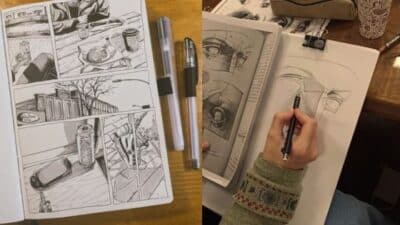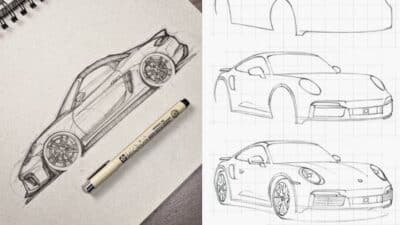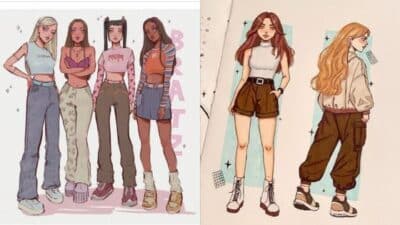Drawing Iron Man can be a rewarding artistic challenge that appeals to Marvel fans and artists of all skill levels. From simple sketches to detailed renderings, capturing the iconic armored superhero allows you to explore both mechanical design elements and dynamic poses. Whether you’re a beginner looking for an easy Iron Man drawing tutorial or an experienced artist wanting to refine your superhero illustration skills, there are approaches that can work for your current ability level.
The popularity of Iron Man drawings has surged since the character’s prominent role in the Marvel Cinematic Universe. Artists often focus on different aspects of the character – from the classic red and gold armor details to the glowing arc reactor at the center of his chest. You can find numerous tutorials online ranging from quick 17-minute sketches to more comprehensive guides that break down the process into manageable steps.
Key Takeaways
- Iron Man’s distinctive armor design offers artists multiple complexity levels to practice, from basic shapes for beginners to intricate mechanical details for advanced artists.
- Using the right materials and understanding Iron Man’s core design elements will help you create more accurate and impressive superhero illustrations.
- Adding color and finishing touches like the glowing arc reactor and metallic armor effects can transform a simple sketch into a dynamic superhero artwork.
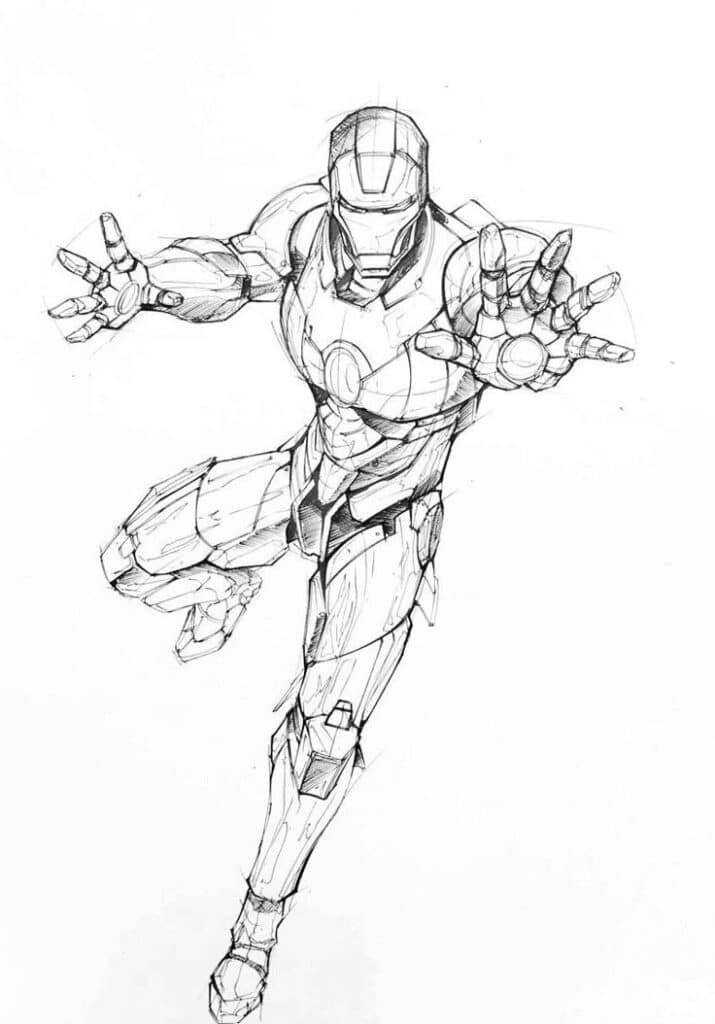
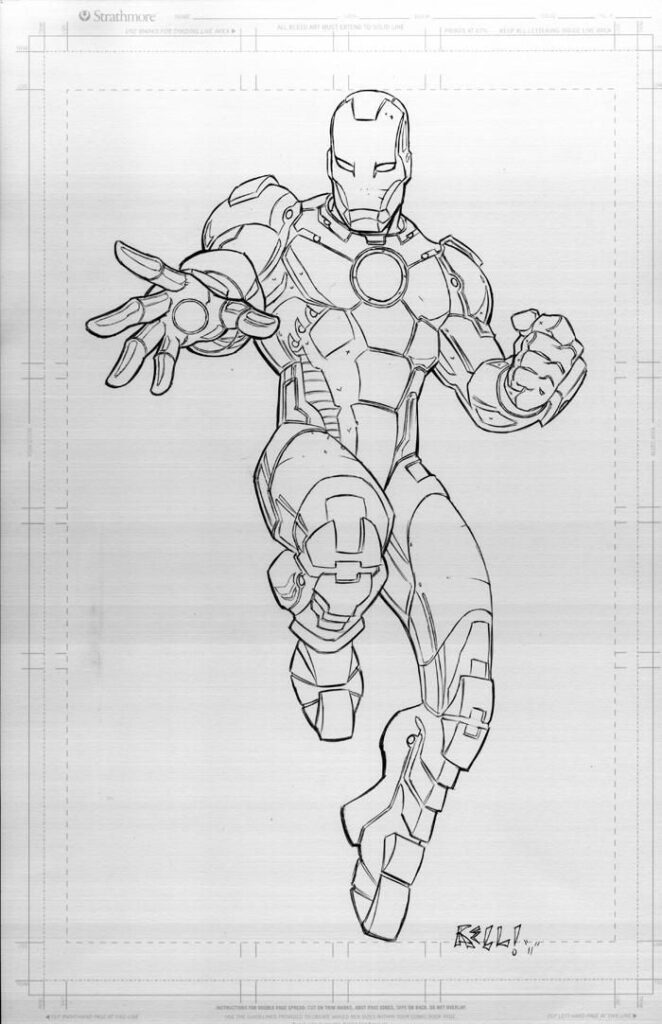
Understanding Iron Man’s Design
Iron Man’s distinctive design combines technological innovation with superhero aesthetics. The character’s visual elements have evolved significantly since his first appearance in Tales of Suspense #39, yet several key components remain central to his recognizable silhouette.
Iconic Armor and Details
When drawing Iron Man, focus on his armor’s defining characteristics. The chest-mounted arc reactor serves as both a power source and a visual focal point. This glowing circular element should be centrally positioned on the torso.
The helmet features a distinctive faceplate with angular eye slits and a mouth line that conveys determination. Early designs were more simplistic, while modern interpretations include intricate panel lines and technological details.
Color schemes matter tremendously. Classic Iron Man uses a primary red and gold palette, though earlier versions featured gold or even gray armor. When sketching, pay attention to how the armor segments at joints to allow movement.
The proportions should suggest strength and technology—broader shoulders, chest, and relatively slimmer waist help create that powerful silhouette.
Recognizing Tony Stark’s Features
When depicting Tony Stark outside the armor, focus on his distinguishing characteristics. His facial hair typically appears as a carefully groomed “van dyke” style beard—a goatee combined with a mustache that doesn’t connect at the corners.
Stark’s hair is usually short and dark, often styled in a fashionable manner befitting a billionaire. His expression commonly shows confidence or intensity, reflecting his genius and determined personality.
Your drawings should capture Stark’s athletic but not overly muscular physique. His posture conveys self-assurance—typically standing straight with shoulders back, embodying the confidence of someone accustomed to command.
For clothing, Stark favors expensive suits or high-tech undergarments designed to interface with his armor. Including subtle technological elements even in civilian attire helps maintain character consistency.
Iron Man’s Superpowers and How They Influence Art
Iron Man’s capabilities directly influence how you should draw him in action. Flight is a primary power, so dynamic poses showing him hovering or soaring add authenticity to your artwork. Consider adding motion lines or thruster effects from his boots and palms.
Repulsor technology creates distinctive energy blasts from his gloves. When illustrating these, use circular patterns with light radiating outward from his palms. These energy signatures are typically blue-white in color.
His superhuman strength comes from the armor, not biological enhancement. When drawing action scenes, show the mechanical nature of this power—the armor doing the work rather than bulging muscles.
The heads-up display (HUD) inside the helmet offers creative opportunities. You can depict Tony’s perspective by showing digital readouts, targeting systems, and information displays overlaid on the scene he’s viewing.
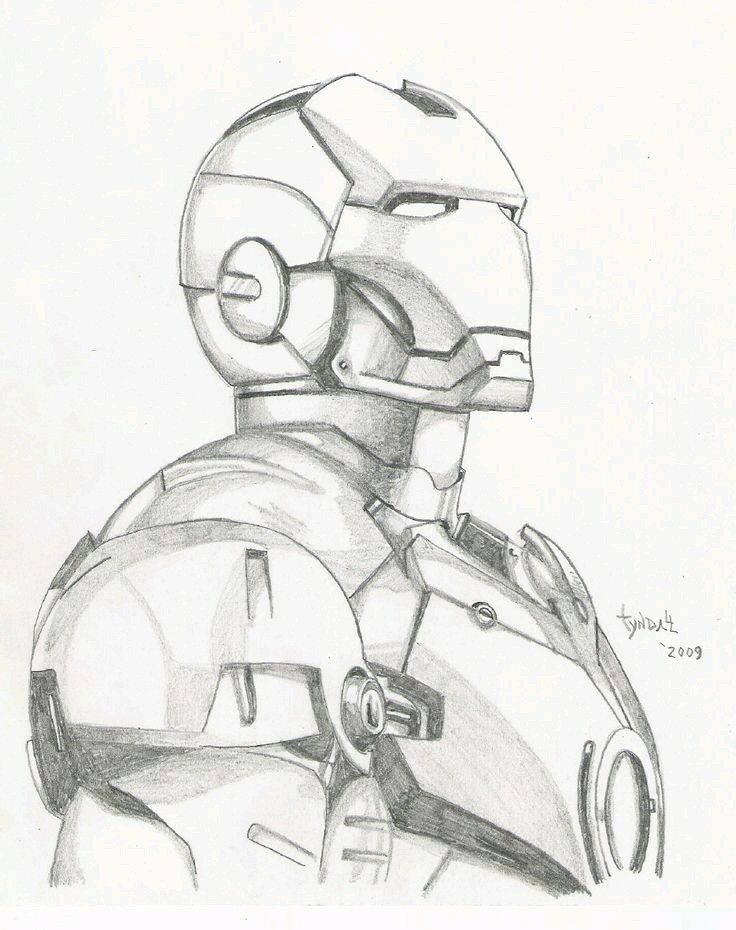
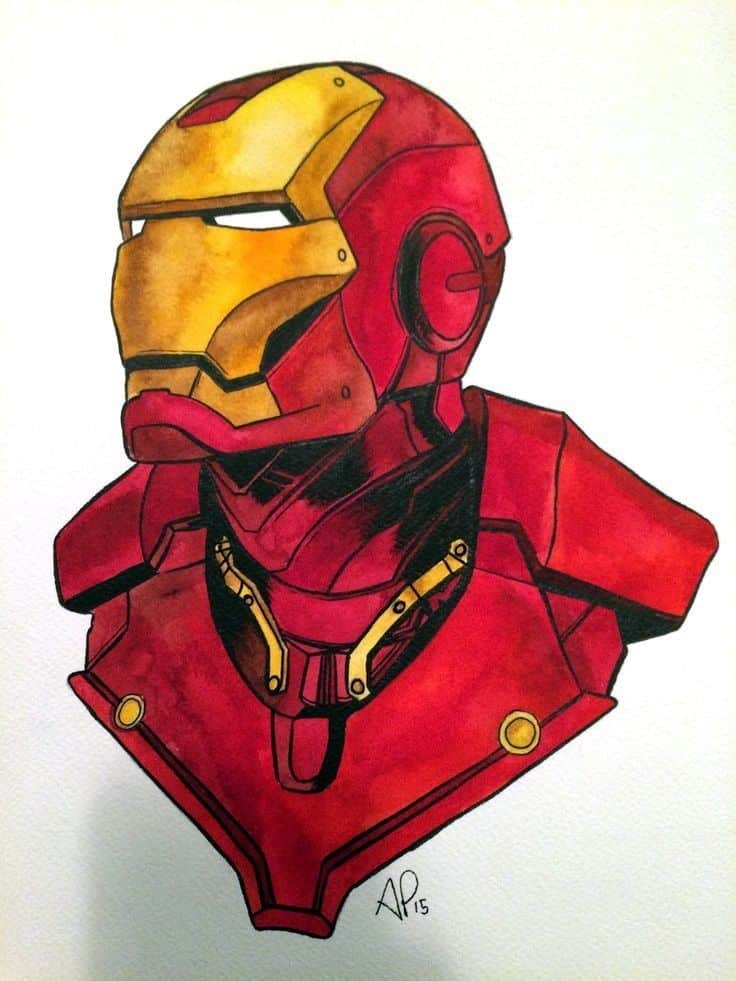
Essential Materials for Iron Man Drawing
Creating a detailed Iron Man drawing requires specific tools that will help you capture the character’s complex armor design and metallic textures. The right materials will make the difference between a basic sketch and a drawing that truly showcases the iconic superhero.
Choosing the Right Pencils
For Iron Man drawings, you’ll need a range of graphite pencils to achieve different values and textures. Start with an HB pencil for initial sketches and outlining the basic shape of the armor.
2H or 3H pencils work well for light details like panel lines on the suit. These harder pencils create precise, light marks that won’t smudge easily.
For darker areas and shadows, use softer pencils like 2B, 4B, and 6B. These will help you create the contrast needed to make the armor appear three-dimensional and metallic.
Colored pencils can also enhance your Iron Man drawing, particularly red and gold shades to capture his classic color scheme. Consider investing in a set of professional-grade colored pencils if you plan to create colored renditions.
Paper and Sketchbooks
The right paper can significantly impact your Iron Man drawing. Smooth, heavyweight paper (100lb or higher) works best for detailed mechanical designs like Iron Man’s armor.
Bristol board provides an excellent smooth surface that allows for precise line work and clean erasing. This is particularly important when drawing the intricate details of Iron Man’s helmet and armor plates.
You might also consider toned paper in gray or tan to help establish mid-tones instantly. This can make highlighting the reflective surfaces of the armor easier.
Sketchbooks with perforated pages allow you to remove your best work for display. Look for acid-free paper that won’t yellow over time if you want to preserve your Iron Man masterpieces.
Erasers and Shading Tools
Different erasers serve various purposes in your Iron Man drawing process. A kneaded eraser is essential for lifting graphite to create highlights on the armor’s reflective surfaces.
Vinyl erasers provide clean, precise erasing for correcting mistakes in detailed areas like the face plate or hand repulsors. Keep a pencil-style eraser on hand for small, targeted corrections.
For shading, blending stumps and tortillons help create smooth transitions between light and dark areas. These tools are perfect for achieving the metallic sheen of Iron Man’s suit.
Cotton swabs can be useful for blending larger areas, while tissue paper works well for softening harsh lines. A small amount of fixative spray will protect your finished drawing from smudging once complete.
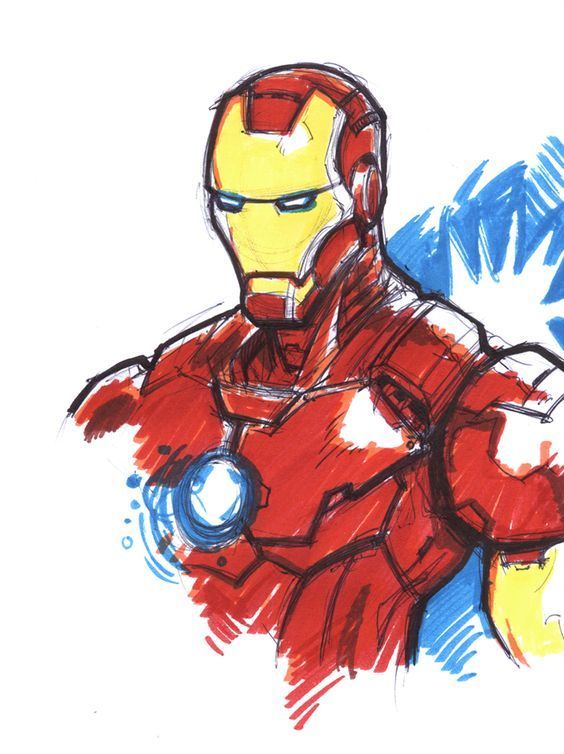
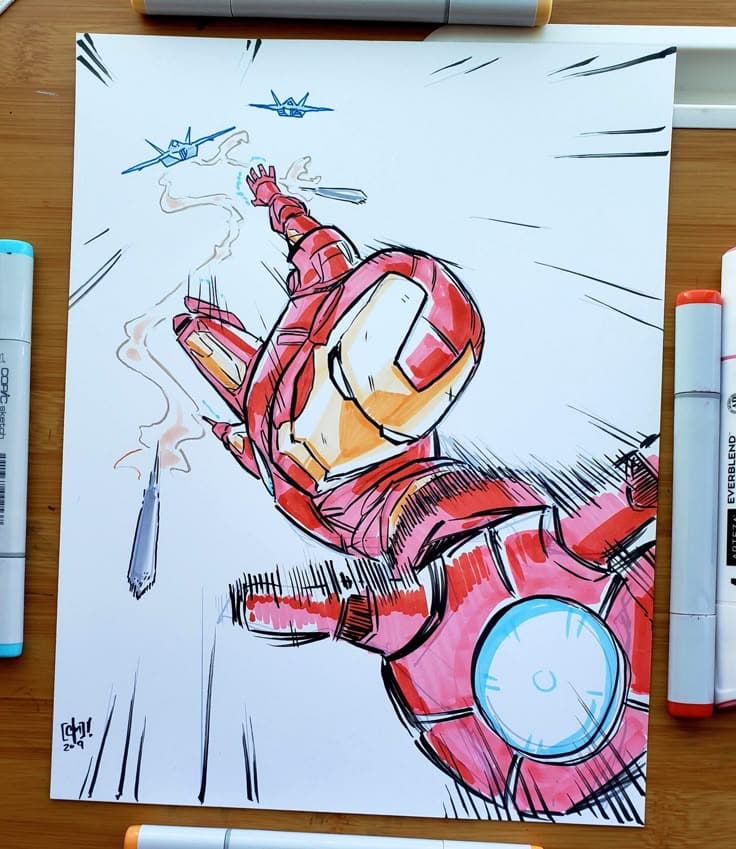
Step-by-Step Guide to Draw Iron Man
Drawing Iron Man requires attention to his iconic armor details and proportions. You’ll start with basic shapes before gradually adding the complex elements that make Tony Stark’s alter ego instantly recognizable.
Sketching Iron Man’s Basic Shapes
Begin with a simple oval for Iron Man’s head. Draw a larger oval below for his chest, connecting them with a short neck line. Sketch a rectangle below the chest for his torso, making it slightly wider at the shoulders and narrower at the waist.
For the limbs, use cylindrical shapes—two for the arms and two for the legs. Remember to keep the arms and legs proportional to the torso. Iron Man’s suit has a mechanical quality, so use geometric shapes rather than organic ones.
Add circles at the joints (shoulders, elbows, knees) to represent the armor’s connection points. Sketch small rectangles for hands and feet. These basic shapes will serve as your foundation.
Adding Armor and Details
Focus on Iron Man’s distinctive armor plates next. Draw angular shoulder pads extending from the upper torso. Add rectangular plates across the chest, with the circular arc reactor in the center—this is Tony Stark’s power source and a key visual element.
Segment the arms and legs with horizontal lines to indicate where armor pieces connect. Draw small circles and lines at joints to suggest mechanical components. Add small rectangles on the forearms for his repulsor weapons.
For the boots, create a slightly flared design with angular lines. Add small thrusters at the bottom of the feet and palms. The armor should look powerful but sleek, combining form and function.
Outlining and Refining the Drawing
Go over your sketch with darker, more confident lines. Erase unnecessary guidelines while preserving the armor’s key details. Add definition to the armor plates with angular edges and mechanical seams.
Emphasize the contrast between hard edges and subtle curves that make Iron Man’s design so distinctive. Draw small panel lines across the armor to suggest technological complexity.
Refine the proportions if needed—Iron Man typically has a heroic physique with broad shoulders and a powerful stance. Add small technological details like vents, screws, and panel separations to enhance realism.
How to Draw Iron Man’s Face
Iron Man’s face is actually his helmet, with its distinctive angular eye slits and mouth opening. Start with the basic helmet shape—rounded at the top and more angular at the jaw.
Draw two narrow, angled rectangles for the eye slits. These should appear slightly angry or determined in expression. Add a small rectangular or trapezoidal shape for the mouth area.
Include panel lines flowing from the center of the face outward. Draw small mechanical details around the jaw and cheeks. The faceplate should look sleek but intimidating.
For a more advanced drawing, add highlights to suggest the metal’s reflective quality. The eyes and chest reactor typically glow blue or white, creating visual focal points in your Iron Man sketch.
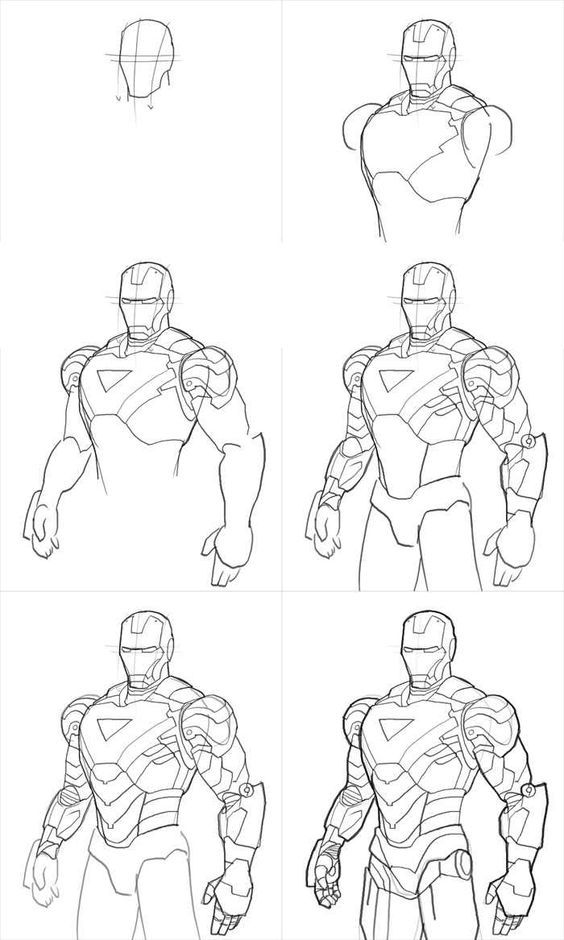
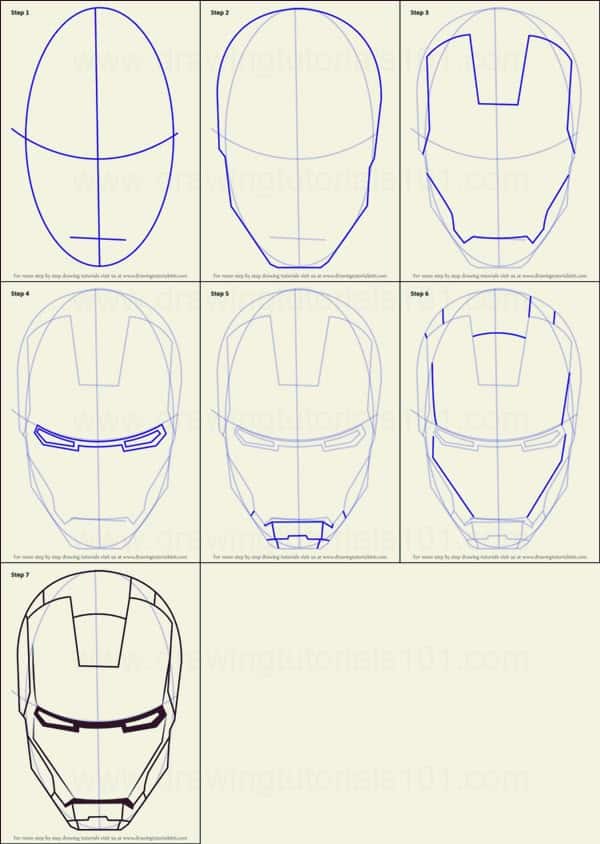
Coloring and Finishing Techniques
Bringing your Iron Man drawing to life requires the right coloring techniques to capture his iconic metallic armor. The classic red and gold color scheme defines the character, while proper shading creates dimension and the illusion of metal.
Iron Man Coloring Pages
Iron Man coloring pages provide excellent practice for beginners. These pre-drawn templates let you focus solely on color application without worrying about proportions or details.
You can find free printable Iron Man coloring pages online featuring different armor variations from the comics and movies. These pages often include simplified versions perfect for younger artists and more detailed versions for advanced colorists.
When coloring these pages, start with base colors first – typically bright red for the main armor and gold/yellow for face, chest, and joint details. Use darker reds for shadows and bright white or light yellow for highlights to create dimension.
Try different mediums on these pages to practice – colored pencils work well for controlled shading, while markers provide bold, vibrant colors that match Iron Man’s striking appearance.
Painting and Digital Coloring
For painting Iron Man, acrylic paints offer vibrant colors that can capture his metallic armor effectively. Start with a base coat of red, then add gold/yellow details for his mask, chest piece, and joints.
Watercolors can create interesting translucent effects, especially for energy elements like the repulsor beams. Build up layers gradually for the best results.
Digital coloring offers tremendous flexibility for your Iron Man drawings. Programs like Inkscape allow you to test different color combinations without commitment. Create separate layers for the base colors, shadows, and highlights.
When coloring digitally, use the gradient tool to create smooth metal transitions. The advantage of digital work is the ability to adjust colors and shading until you achieve the perfect metallic look for your Iron Man illustration.
Highlighting Metallic Effects
Creating convincing metal effects is crucial for an impressive Iron Man drawing. The key is understanding how light interacts with metal surfaces.
Add white highlights along edges and raised areas where light would naturally hit the armor. Keep these highlights sharp and crisp rather than blended. For a more dramatic effect, use light yellow instead of pure white on gold areas.
Create shadows using darker red (for red areas) or burnt orange (for gold sections). Place shadows on the opposite side from your highlights for consistency. Remember that metal reflects surrounding colors, so include subtle blue reflections to suggest the sky or environment.
For advanced metallic effects, add small scratches or battle damage using thin white lines crossed with darker marks. This creates realism and suggests the armor has seen action. Use reference images of real metal objects to understand how to render reflective surfaces convincingly.
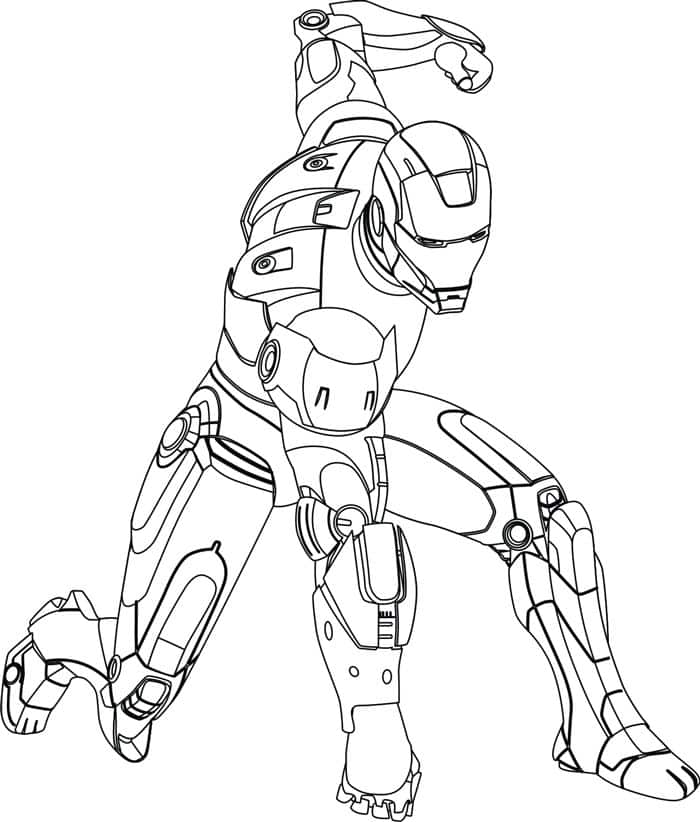
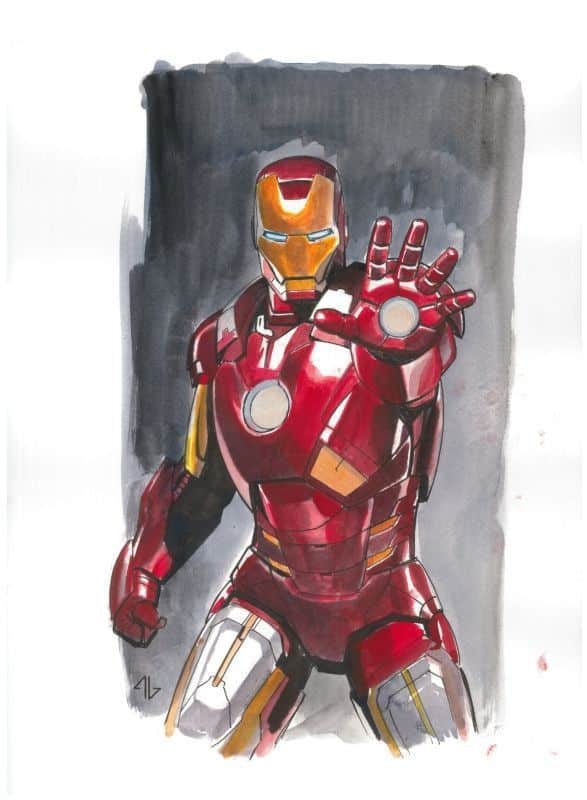
Inspiration and Popular Iron Man Art
Iron Man’s iconic design has evolved significantly since his first comic appearance, inspiring countless artists to create their own interpretations. Artists draw inspiration from various sources including comics, films, and personal imagination to craft unique Iron Man artwork.
Avengers Influence on Iron Man Art
The Avengers franchise dramatically expanded Iron Man’s popularity in the art world. Many artists focus on team dynamics, creating pieces that showcase Iron Man alongside other Avengers. You’ll notice that post-Avengers artwork often incorporates elements from the team’s unified aesthetic.
The Mark VII suit featured in the first Avengers film became particularly influential, with its distinctive red and gold color scheme and sleeker design. Artists frequently reference the dramatic “suit-up” sequences from the films, capturing the mechanical precision and technological marvel of Tony Stark’s creations.
Group battle scenes from Avengers movies provide rich material for fan artists. These compositions typically place Iron Man in tactical positions that highlight his role as both tech genius and combat strategist within the team.
Role of Robert Downey Jr in Artistic Interpretations
Robert Downey Jr’s portrayal fundamentally transformed how artists approach Iron Man drawings. His facial expressions and body language have become inseparable from the character in modern art interpretations.
Many artists now specifically incorporate Downey’s features when drawing Tony Stark without his helmet. His trademark goatee, expressive eyebrows, and confident smirk have become defining characteristics in fan art and professional work alike.
Action poses reflecting Downey’s portrayal—especially his distinctive flight stance with one arm extended—appear frequently in Iron Man drawings. Artists often capture specific moments from films, such as the “I am Iron Man” scene or the holographic interface interactions.
The emotional depth Downey brought to the character also influences artwork that explores Tony Stark’s vulnerability and humanity behind the armor.
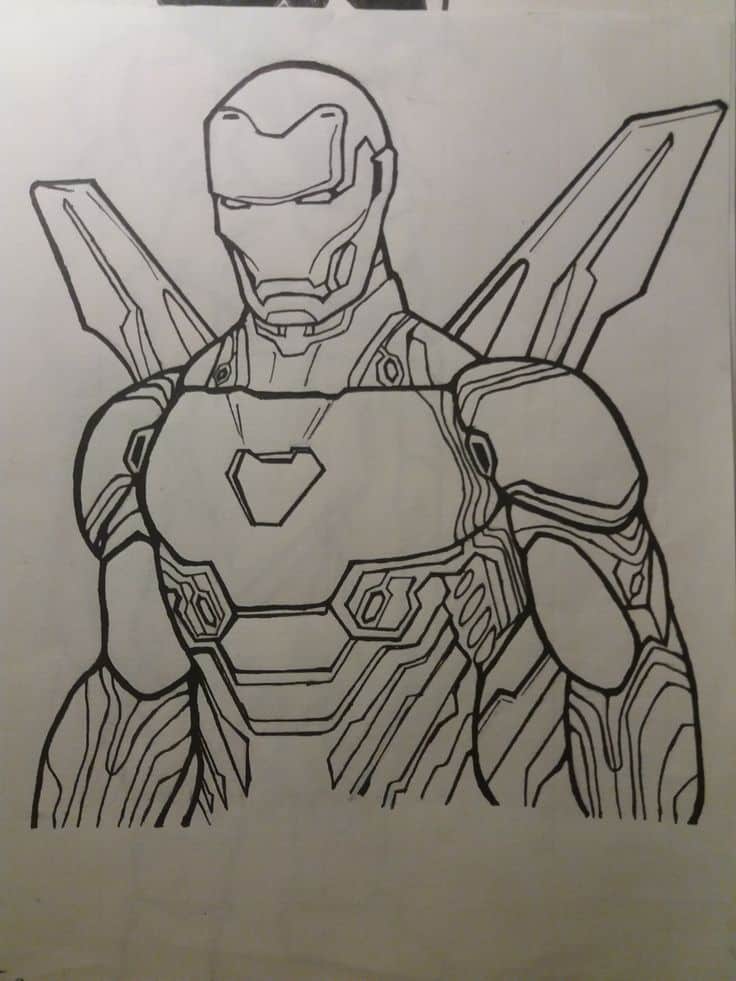

Professional Illustration and Drawing Services
Professional artists offer specialized Iron Man illustration services for various purposes. You can commission custom artwork through platforms like DeviantArt, Fiverr, and specialized comic art websites.
Many professional illustrators provide tiered service options:
- Basic sketches: Simple pencil drawings focusing on iconic poses
- Full-color illustrations: Detailed artwork with professional coloring and effects
- Custom concept designs: Unique Iron Man suit variations tailored to client specifications
Professional artists often differentiate themselves by specializing in particular styles—some excel at hyperrealistic portraits of Robert Downey Jr as Tony Stark, while others focus on mechanical details of the suit designs.
Pricing typically ranges from $50-$500 depending on complexity, size, and the artist’s reputation. Most professionals deliver both digital files and print-ready versions of completed artwork.
- 14shares
- Facebook0
- Pinterest14
- Twitter0

